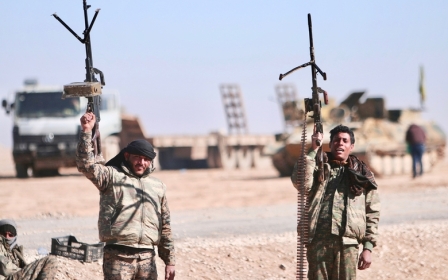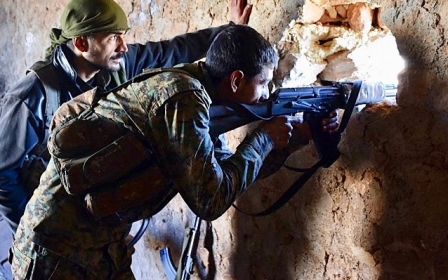Syria executed up to 13,000 people in one prison: Amnesty

As many as 13,000 people were hanged in five years at a notorious Syrian government prison near Damascus, Amnesty International said on Tuesday, accusing the government of a "policy of extermination".
Titled "Human Slaughterhouse: Mass Hangings and Extermination at Saydnaya Prison", Amnesty's damning report is based on interviews with 84 witnesses, including guards, detainees and judges.
"Saydnaya military prison is where the Syrian state quietly slaughters its own people. The victims are overwhelmingly ordinary civilians who are thought to oppose the government. Since 2011, thousands of people have been extrajudicially executed in mass hangings, carried out at night and in the utmost secrecy," read the report.
The rights group interviewed dozens of people, including former prisoners, guards, judges, lawyers and experts.
It found that at least once a week between 2011 and 2015, groups of up to 50 people were taken out of their prison cells for arbitrary trials, beaten and hanged "in the middle of the night and in total secrecy".
"Throughout this process, they remain blindfolded. They do not know when or how they will die until the noose was placed around their necks," the rights group wrote.
Most of the victims were civilians believed to be opposed to the government of President Bashar al-Assad.
"They kept them (hanging) there for 10 to 15 minutes," a former judge who witnessed the executions said.
"For the young ones, their weight wouldn't kill them. The officers' assistants would pull them down and break their necks," he said.
READ: 'State terrorism' complaint filed against Syrian officials in Spanish court
Amnesty said the practices amounted to war crimes and crimes against humanity, but were likely still taking place.
"For the young ones, their weight wouldn't kill them. The officers' assistants would pull them down and break their necks"
Amnesty accused the Syrian government of carrying out a "policy of extermination" there by repeatedly torturing detainees and withholding food, water and medical care.
Prisoners were raped or forced to rape each other, and guards would feed detainees by tossing meals onto the cell floor, which was often covered in dirt and blood.
According to the report, between 5,000 and 13,000 inmates died in Saydnaya alone.
'Hidden, monstrous campaign'
A twisted set of "special rules" governed the facility: detainees were not allowed to speak and must assume certain positions when guards enter their cells.
"Every day there would be two or three dead people in our wing... I remember the guard would ask how many we had. He would say, 'Room number one – how many? Room number two – how many?' and on and on," said Nader, a former detainee whose name has been changed.
After one fierce day of beating, Nader said, 13 people died in a single wing of the prison.
One former military officer said he could hear "gurgling" as people were hanged in an execution room below.
"If you put your ears on the floor, you could hear the sound of a kind of gurgling," said Hamid, who was arrested in 2011.
"We were sleeping on top of the sound of people choking to death. This was normal for me then," he told Amnesty.
The group has previously said that more than 17,700 people were estimated to have died in government custody across Syria since the country's conflict erupted in March 2011.
"If you put your ears on the floor, you could hear the sound of a kind of gurgling"
"The horrors depicted in this report reveal a hidden, monstrous campaign, authorised at the highest levels of the Syrian government, aimed at crushing any form of dissent within the Syrian population," said Lynn Maalouf, deputy director for research at Amnesty's Beirut office.
"The cold-blooded killing of thousands of defenceless prisoners, along with the carefully crafted and systematic programmes of psychological and physical torture that are in place inside Saydnaya prison cannot be allowed to continue," she said.
A probe by the United Nations last year accused Assad's government of a policy of "extermination" in its jails.
Middle East Eye propose une couverture et une analyse indépendantes et incomparables du Moyen-Orient, de l’Afrique du Nord et d’autres régions du monde. Pour en savoir plus sur la reprise de ce contenu et les frais qui s’appliquent, veuillez remplir ce formulaire [en anglais]. Pour en savoir plus sur MEE, cliquez ici [en anglais].




